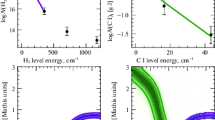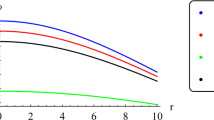Abstract
We analyse the history of modern cosmology based on the redshift phenomenon and on the cosmic background radiation (CBR). We show the models of different authors for the interpretation of the redshift and how the tired light models predicted the correct value of 2.7 K temperature previous to Gamow and collaborators.
Similar content being viewed by others
Explore related subjects
Discover the latest articles and news from researchers in related subjects, suggested using machine learning.References
Alpher, R. A. and Hermann, R. C.: 1949, “Remarks on the evolution of the expanding universe”,Phys. Rev., Vol.75, pp. 1089–1095.
Arp, H.: 1987,Quasars, Redshifts and Controversies, Interstellar Media, Berkeley.
Assis, A. K. T.: 1992, “On Hubble's law of redshift, Olbers' paradox and the cosmic background radiation”,Apeiron, Vol.12, pp. 10–16.
Assis, A. K. T.: 1993, “A steady-state cosmology”, in:Progress in New Cosmologies: Beyond the Big Bang, H. C. Arp, C. R. Keys and K. Rudnicki (eds.), Plenum Press, New York, pp. 153–167.
Born, M.: 1954, “On the interpretation of Freundlich's red-shift formula”,Proc. Phys. Soc. A, Vol.67, pp. 193–194.
Born, M.: 1962,Einstein's Theory of Relativity, revised ed., Dover Publications, New York.
Brush, S. G.: 1992, “How cosmology became a science”,Scientific American, Vol.267, pp. 62–70.
de Broglie, L.: 1966, “Sur le déplacement des raies émises par un objet astronomique lointain”,Compt. Rendues l'Acad. Sci. Paris, Vol.263, pp. 589–592.
Eddington, A. S.: 1988a,The Internal Constitution of the Stars, Cambridge University Press, Cambridge, Chapter 13, p. 371. Reprint of 1926 edition.
Eddington, A. S.: 1988b,The Expanding Universe, Cambridge University Press, Cambridge. Reprint of 1933 edition.
Finlay-Freundlich, E.: 1954, “Red shifts in the spectra of celestial bodies”,Phil. Mag., Vol.45, pp. 303–319.
Gamow, G.: 1961,The Creation of the Universe, Viking Press, New York, revised edition, pp. 42–43.
Penzias, A. A.: 1972, “Cosmology and microwave astronomy”, in:Cosmology, Fusion & Other Matters, F. Reines (ed.), Colorado Associated University Press, Boulder, pp. 29–47.
Penzias, A. A. and Wilson, R. W.: 1965, “A measurement of excess antenna temperature at 4080 Mc/s”,Astrophys. J. Vol.142, pp. 419–421.
Nernst, W.: 1937, “Weitere prüfung der annahme lines stationären zustandes im weltall”,Zeit. Phys., Vol.106, pp. 633–661.
Reber, G.: 1986, “Intergalactic plasma”,IEEE Trans. on Plasma Sci., Vol.PS-14, pp. 678–682.
Reboul, K. J.: 1981, “Untrivial red shifts: A bibliographical catalogue”,Astron. Astrophys. Supp., ser.45, pp. 129–144.
Regener, E.: 1933, “Der energiestrom der ultrastrahlung”,Zeit. Phys., Vol.80, pp. 666–669.
Author information
Authors and Affiliations
Rights and permissions
About this article
Cite this article
Assis, A.K.T., Neves, M.C.D. The redshift revisited. Astrophys Space Sci 227, 13–24 (1995). https://doi.org/10.1007/BF00678063
Issue Date:
DOI: https://doi.org/10.1007/BF00678063




